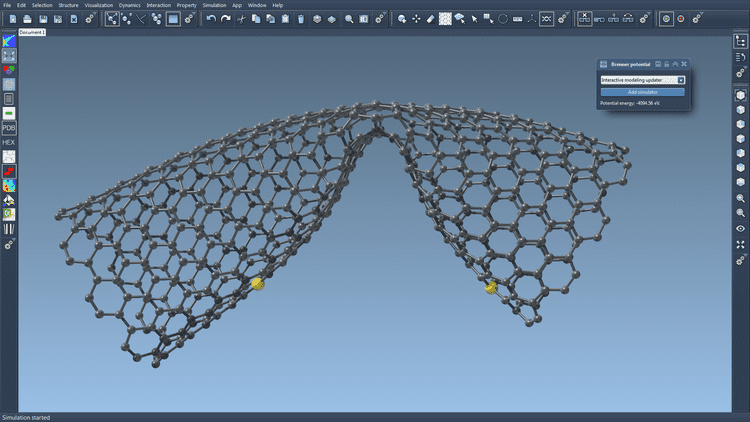Developer(s) NANO-D - INRIA Development status Active Operating system | Preview release 0.5.0 Written in C++ (Qt) | |
 | ||
SAMSON (Software for Adaptive Modeling and Simulation Of Nanosystems) is a computer software platform for computational nanoscience being developed by the NANO-D group at the French Institute for Research in Computer Science and Automation (INRIA).
Contents
- SAMSON Elements
- Modeling and simulation
- Data graph
- Node specification language
- Features
- SAMSON Connect
- References
SAMSON has a modular architecture that makes it suitable for different domains of nanoscience, including material science, life science, physics, electronics, chemistry, and education.
SAMSON Elements
SAMSON Elements are modules for SAMSON, developed with the SAMSON software development kit (SDK). SAMSON Elements help users perform tasks in SAMSON, including building new models, performing calculations, running interactive or offline simulations, and visualizing and interpreting results.
SAMSON Elements may contain different class types, including for example:
SAMSON Elements expose their functions to SAMSON and other Elements through an introspection mechanism, and may thus be integrated and pipelined.
Modeling and simulation
SAMSON represents nanosystems using five categories of models:
Simulators (potentially interactive ones) are used to build physically-based models, and predict properties.
Data graph
All models and simulators are integrated into a hierarchical, layered structure that form the SAMSON data graph. SAMSON Elements interact with each other and with the data graph to perform modeling and simulation tasks. A signals and slots mechanism makes it possible for data graph nodes to send events when they are updated, which makes it possible to develop e.g., adaptive simulation algorithms.
Node specification language
SAMSON has a node specification language (NSL) that users may employ to select data graph nodes based on their properties. Example NSL expressions include:
Features
SAMSON is developed in C++ and implements many features to ease developing SAMSON Elements, including:
SAMSON Connect
SAMSON, SAMSON Elements and the SAMSON Software Development Kit are distributed via the SAMSON Connect website. The site acts as a repository for the SAMSON Elements being uploaded by developers, and users of SAMSON choose and add Elements from SAMSON Connect.
